October 2021: It’s a great time to reminisce about past travels while most of us stay at home during the COVID pandemic.
Originally posted: September 2018
There are few things I love better than poking about in prehistoric Britain. Located near several of the Cotswolds’ most beautiful villages are one of England’s most charming megalithic sites, called the Rollright Stones. Not only are they magical, they’re surrounded by colorful stories to boot.
Because our vacation was free from the worries of driving on the left-hand side of the road, Ken and I arranged a taxi from the White Hart Royal Hotel in Moreton-in-Marsh to the Rollright Stones, which consists of three monuments: the King’s Men stone circle, the Whispering Knights burial chamber, and the King Stone standing stone. Each was built hundreds or thousands of years apart, between 3800 and 1500 years BCE.
We arrived in the midst of a drizzle, arranged for our driver to return in two hours, and followed the signs through the trees to the largest site, The King’s Men stone circle, where we stood beneath the trees and read the legend of the Rollright Stones from our guidebook.
The tale, which probably dates back to medieval times, goes something like this: A king and his army were marching through the Cotswold Hills when they were changed to stone by a witch—no doubt a wise woman who reasoned that the land was better off remaining as crop- and pastureland instead of becoming a battlefield. So, the crone turned the king into the lone-standing King Stone, his army into the King’s Men circle of stones, and his treason-plotting knights into the Whispering Knights standing stones. The witch then transformed into an elder tree, which supposedly still grows on the hill; if that elder is ever cut, the spell will break, and all the Stones will come back to life.
The King’s Men Stone Circle
The drizzle ceased, and we walked out into the open hilltop to a sweeping panorama of the Oxfordshire/Warwickshire countryside. And then we saw the beautiful King’s Men stone circle, the highlight of the Rollright Stones’ three sites. Dozens of pocked and craggy limestones—most less that six feet tall—stood in circular formation.
It was easy to see why they’re named for soldiers—many of the more upright stones did seem to have human shapes, although some of them were squat. Each stone possessed amazing character: each was weathered like an aged person’s face. In addition, the stones are covered by unique lichens in many hues—rust, ochre, burnt umber—and according to the info board about the circle, some of those lichens are 400 to 600 years old! The stones are surrounded at their bases by grass, moss, stinging nettles, and tiny field flowers.
Ken and I were roaming alone among the stones, admiring their topography, when we were joined by a quartet of vivacious girls who skipped five or six times around the circle counting the stones.
There’s another legend about the King’s Men stone circle: the stones are supposedly uncountable. There are 70-odd stones, but in places it’s almost impossible to tell where one stone begins and the other ends because they lie in a cluster. Other stones barely show above the ground and the tufts of grass. According to the story, if you count the same number of stones three times, you are granted a wish.
After the girls had raced around the circle, we overheard them declaring to their mums that they got the same count three times, so they were all making a wish.
After the group left, I began counting stones but was distracted when I looked into the stand of trees that grew in a horseshoe around the circle. In the shrubbery, something shiny and colorful caught my eye, and when I went to look, I discovered that it was clooties—scraps of cloth or other decorations—tied to the branches.
Clooties (also spelled “cloughties” or “clouties”) are a Pagan tradition for honoring trees and asking for healing, and they’re commonly found at sacred sites (like ancient standing stones) and healing wells across the UK and Ireland.
The Rollright clooties were made of ribbon, cloth, stalks of barley or wheat from the surrounding fields, daisy chains, and bits of colorful litter like candy and gum wrappers and a Pellegrino label that the makers probably cleaned up from the vicinity. I imagined that a Pagan group, celebrating Lughnasa just a few weeks before in early August, might have freshly decorated the boughs.
To give thanks for my regained mobility after hip replacement—which made it possible for me to travel to England for a walking holiday—I assembled my own clootie out of dandelions and a spray of leaves, and I tied them to a branch.
Last, I circumnavigated the circle again, counting the stones. I came up with 76, but didn’t have time to do a second or third pass; we still had two more sites to visit before our time was up, so I left it to the mystery.
I did, however, take a moment to try to envision the stones with no gaps between them. According to historical and archaeological documentation, the stones may originally have numbered about 105, all standing shoulder to shoulder—even more like a militia than they look now. Over the millennia, many of the stones have fallen, and some were carted away in the last millennia for use in building bridges and whatnot.
In modern times, the Rollright Stones have been used to exhibit modern sculptures, including Anish Kapoor’s Turning the World Inside Out, and for plays, notably Mark Rylance’s production of The Tempest in1992. The Stones are also regularly used for private wedding and naming ceremonies and other celebrations, according to the Rollright website.
The Whispering Knights
Just a short walk past pastures of grazing sheep are the Whispering Knights. This trio of upright stones is aptly named because the stones lean into each other, so it doesn’t take much imagination to picture them as disgruntled knights furtively colluding against the king.
In reality, the vertical stones originally formed a Neolithic portal-dolmen, with these upright stones supporting a capstone, or flat “roof.” Sometime between 3800 and 3500 BCE, builders constructed this portal to lead into a communal burial chamber, which was used for human remains well into the Bronze Age, according to the sign posted at the site.
Today the Whispering Knights are surrounded by an iron fence to discourage people from climbing on the stones and damaging them or the lichens that grow on them. The Knights gaze over the farm fields and stands of trees as far as the eye can see. People toss coins into the crevasses of one of the fallen stones—for luck I suppose. Or perhaps to insure that they will return to this lovely place.
The mysterious stones seem to have captured the imagination of people in the region for centuries: There’s an age-old story that on New Year’s Day, the three Whispering Knights hoist their rocky bodies and “walk” down the valley to the brook for a drink of water. The church bells of the nearby town of Long Compton are also supposed to inspire this migration. If ever there were three stones with human personalities, it’s these three.
Other local folklore includes this story: A local farmer wanted one of the largest stones to build a bridge over a stream. It took 24 horses to drag the stone down the hill, and one worker was killed on the way. Eventually the farmer got the stone positioned across the stream, but by the next morning it had flipped over onto the bank! Each time the farmer moved the stone into a bridge position, the same thing happened. Then the area crops failed, so the farmer and his friends decided to return the stone to its original position. This time it took only onehorse to drag the heavy slab back up the hill!
The moral of the story? Don’t mess with ancient megaliths—and never underestimate their power or majesty.
The King Stone
We walked back to the road and crossed, passed through a farm gate, and wandered up to the lone King Stone, which rises sinuously from earth to sky.
Its lovely curve isn’t how the stone originally appeared; its shape is the result of centuries of human vandalism, now hopefully curbed by an iron fence with arrow-shaped spikes at the tops.
According to the sign, 19th century drovers and visitors chipped off part of the stone as good-luck charms and to “keep the Devil at bay.”
Bad luck, if you ask me. In fact, it’s a criminal offence to damage any monument stones like this in Britain.
There’s something lonely and exposed about the solitary King Stone, which looks as if thousands of years of wind passing over the hilltop had unfurled solid rock, sending it sailing skyward into the mottled clouds. Or perhaps the presence of adjacent burial chambers and cairns contributes to the melancholy atmosphere.
Or, maybe it’s the scale of time at the Rollright Stones: We humans have a lifespan of a hundred years if we’re lucky, whereas the King Stone has been a sentry over these Cotswold hills for more than 3,500 years. The Whispering Knights have guarded their secrets for almost 6,000 years.
After two hours at the Rollright Stones—which slipped by in the blink of an eye—our taxi driver returned to whisk us along the country roads and back to our hotel, which has been operating as an inn since the 1600s. Such is time in the ancient lands of Britain.
—Laurel Kallenbach, freelance writer and editor
The entrance fee to the Rollright Stones is just 1£. For more information, including instructions to get to the site, visit RollrightStones.co.uk.
More about megaliths:


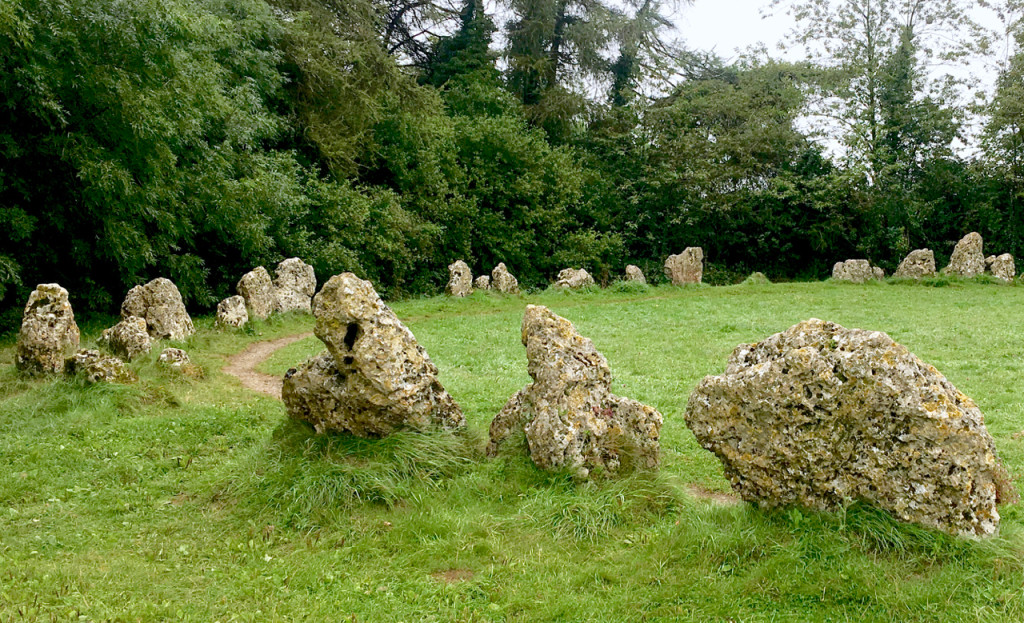
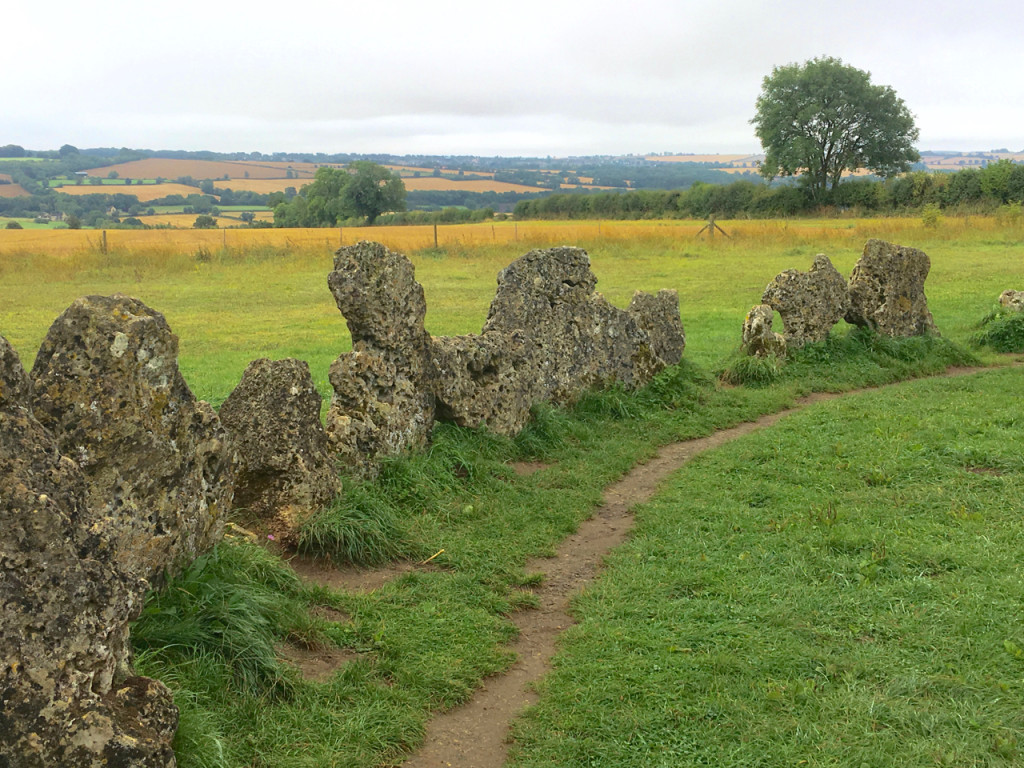
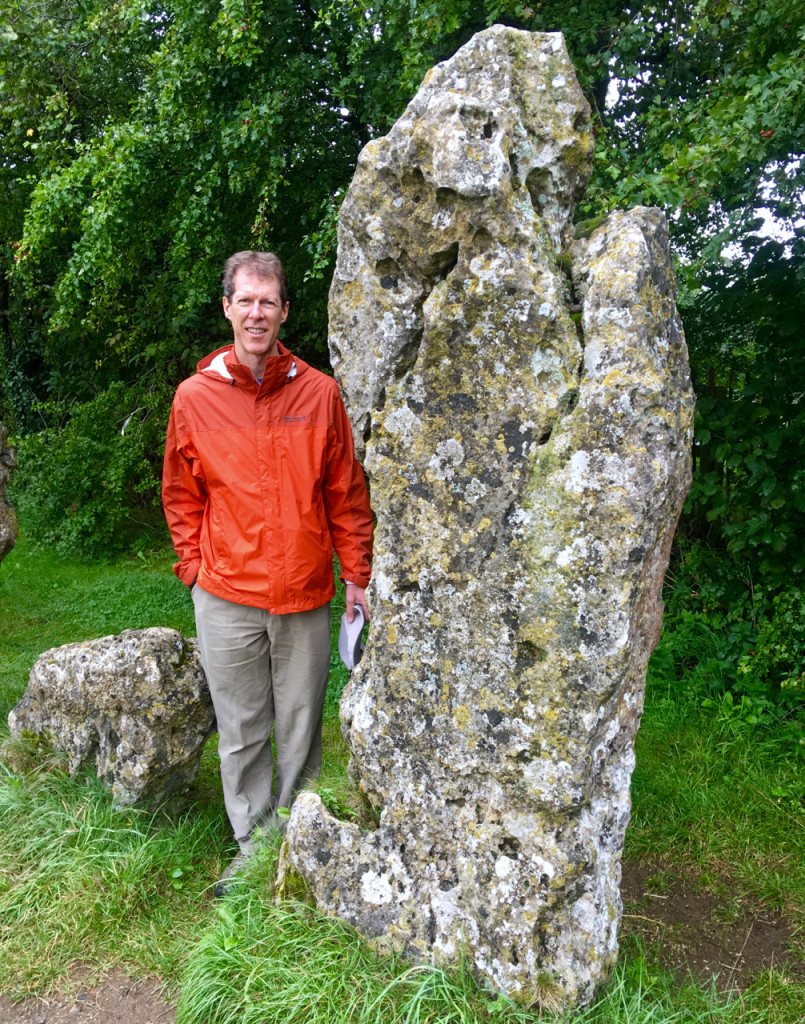
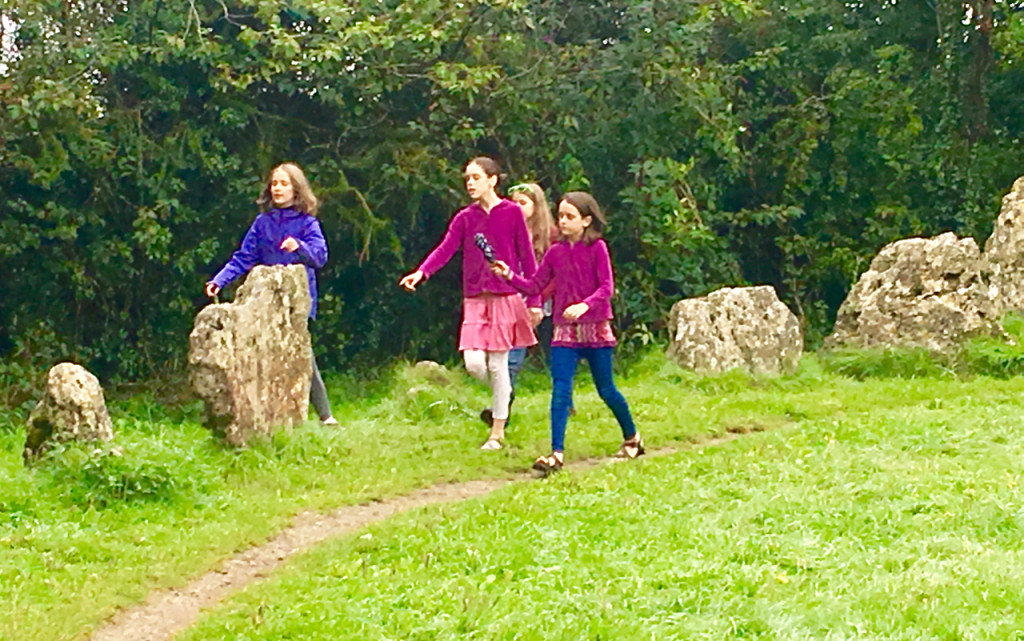
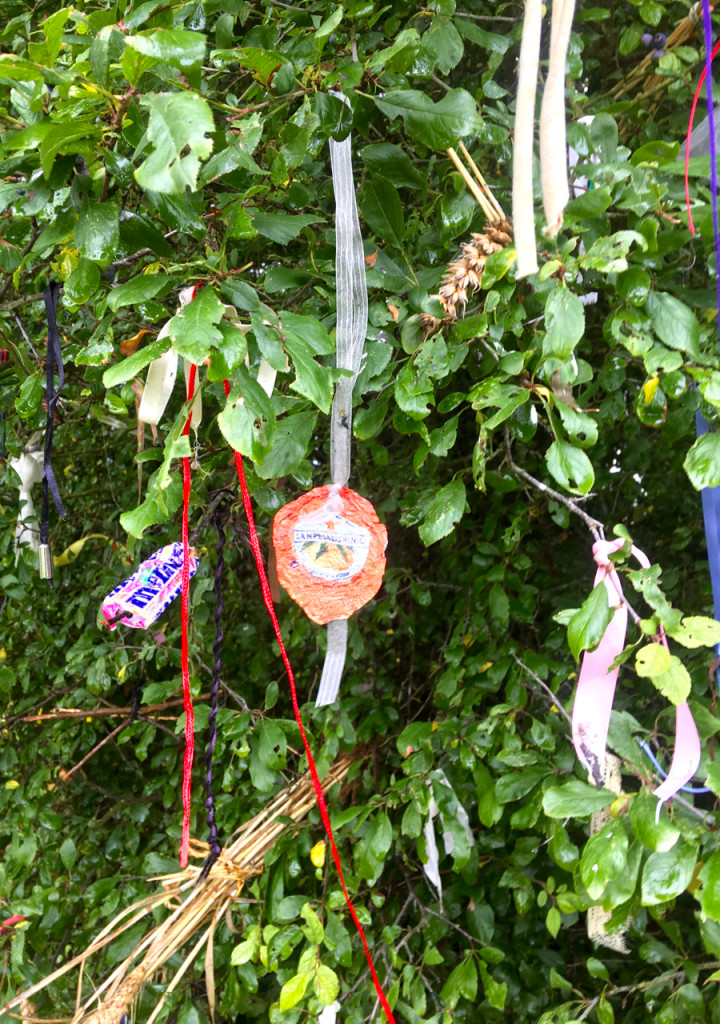
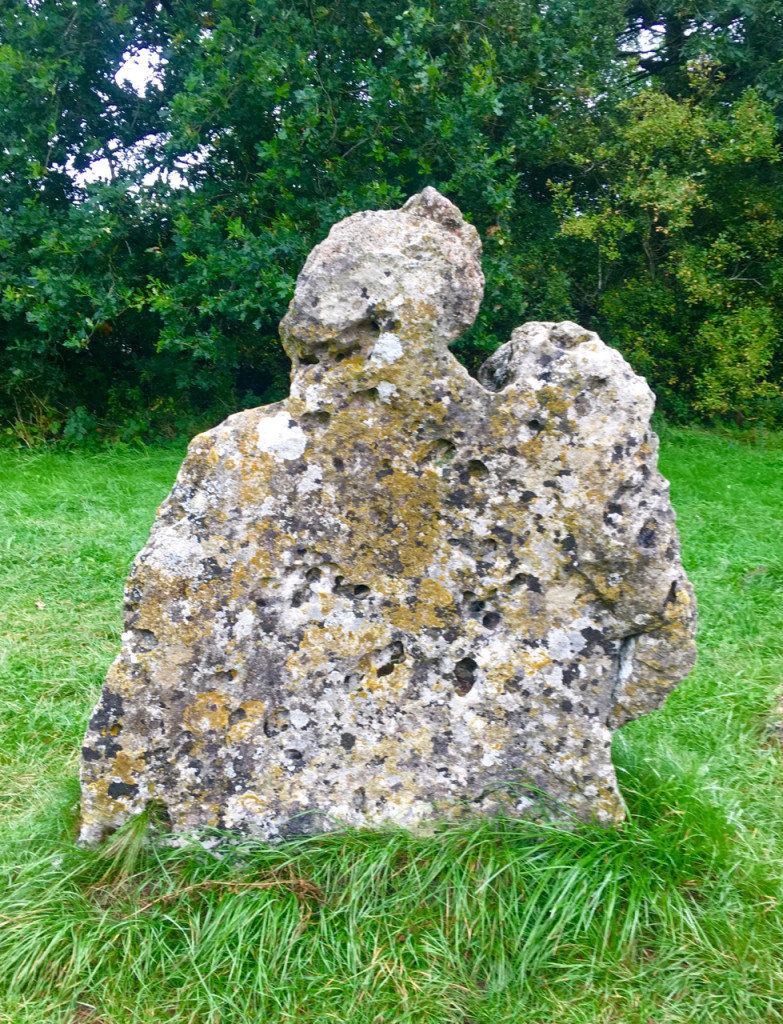
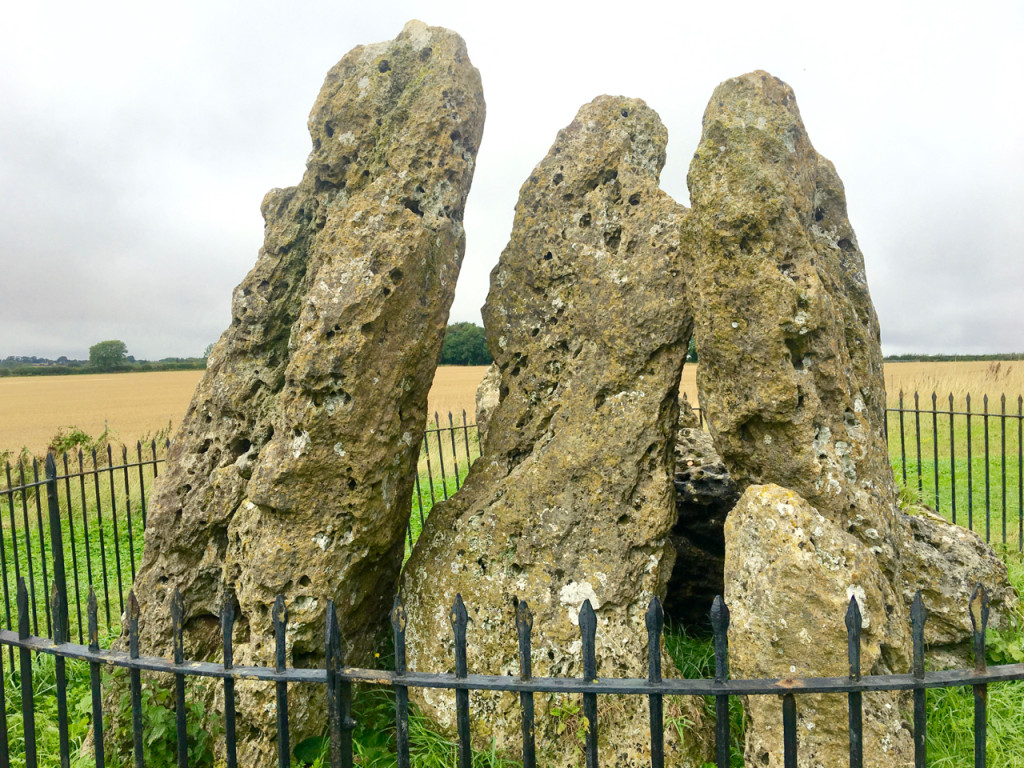
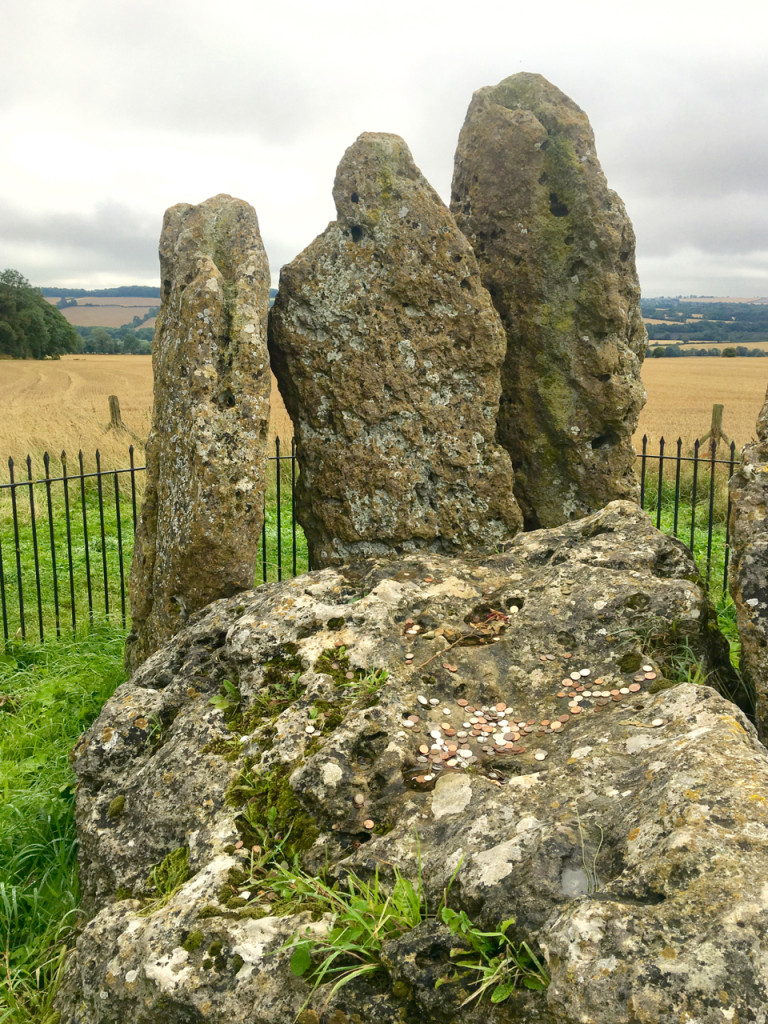
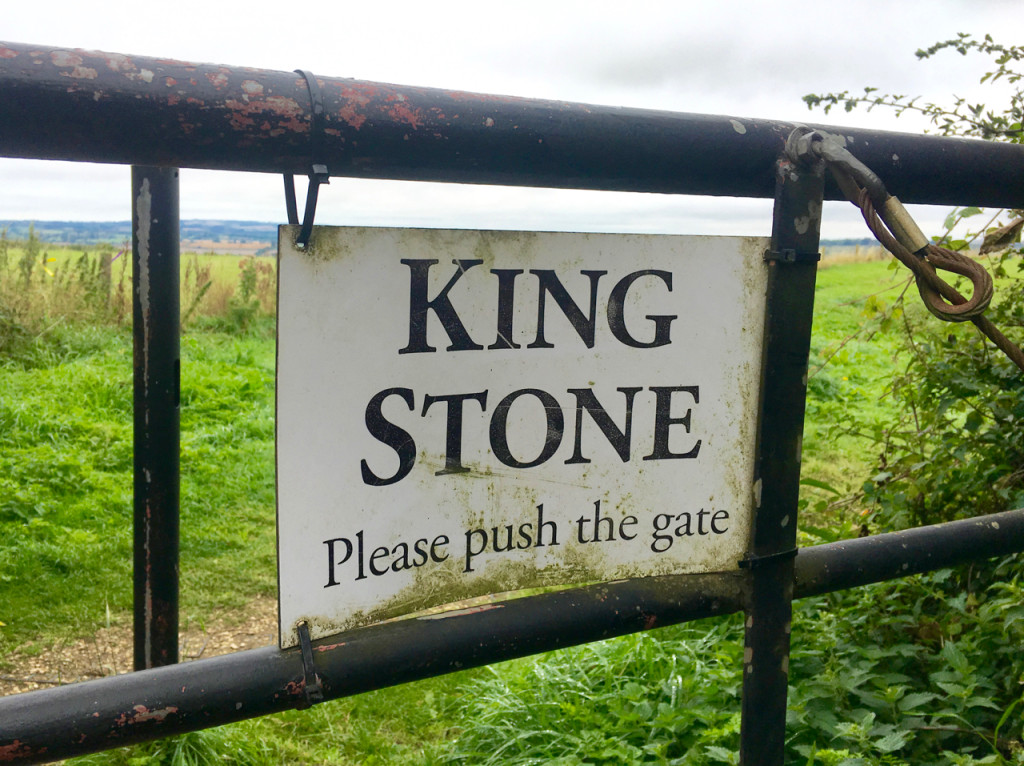
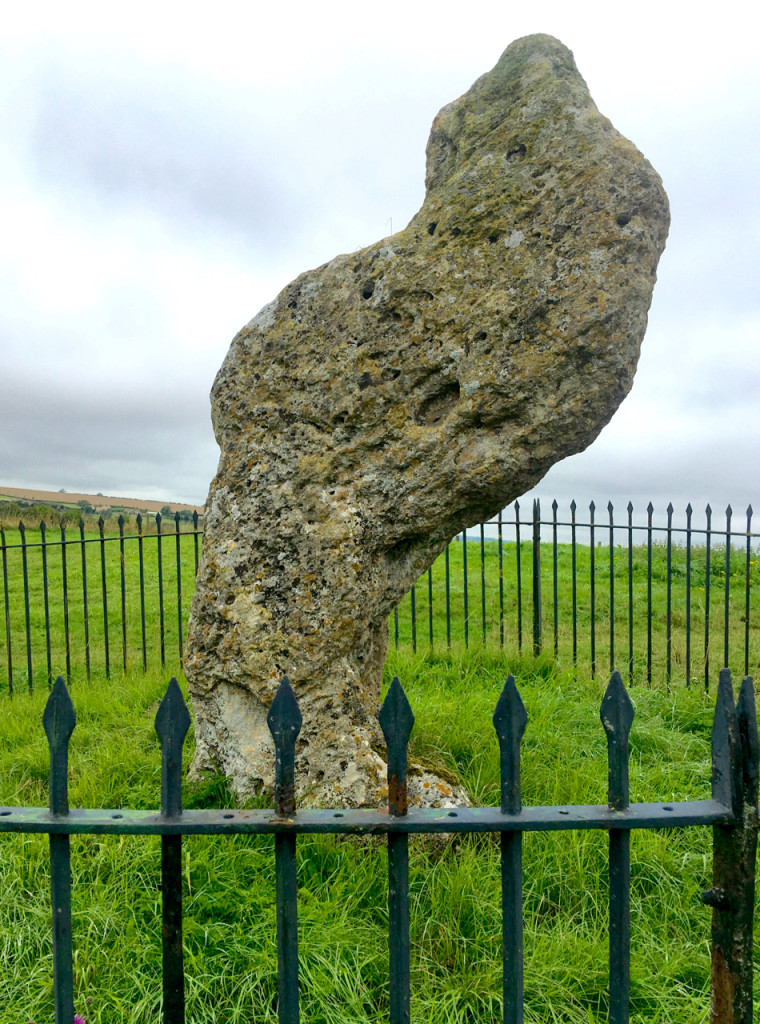
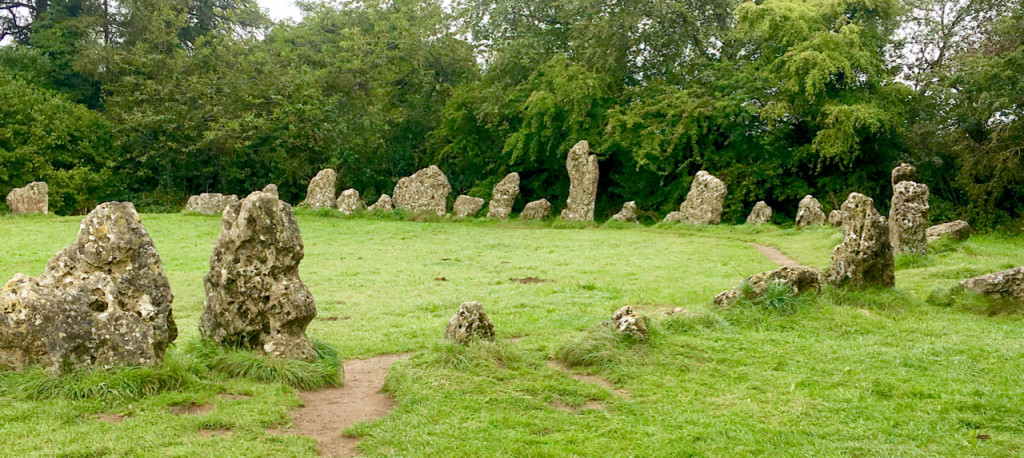


What a lovely article! Enchanting!
Thanks, Christine, for reading! I’m reliving my glory days from last summer when I thought my hip was “cured” for good.
I envy your travels! You pick some wild and wacky places to go!
Yep, I’m a geek for stone circles and dolmens!
Absolutely awesome… hope I get there some day. Thank you!!!
I loved that magical place!! Thanks for reading!
not trying to take away your enjoyment of this ancient site but did you ever hear about the dark occult murder of a farmer after he witnessed ritual ceremony there, found dead the next day with sprong in his neck, they unsettle me even looking at them bet there is some weird energy there in my view